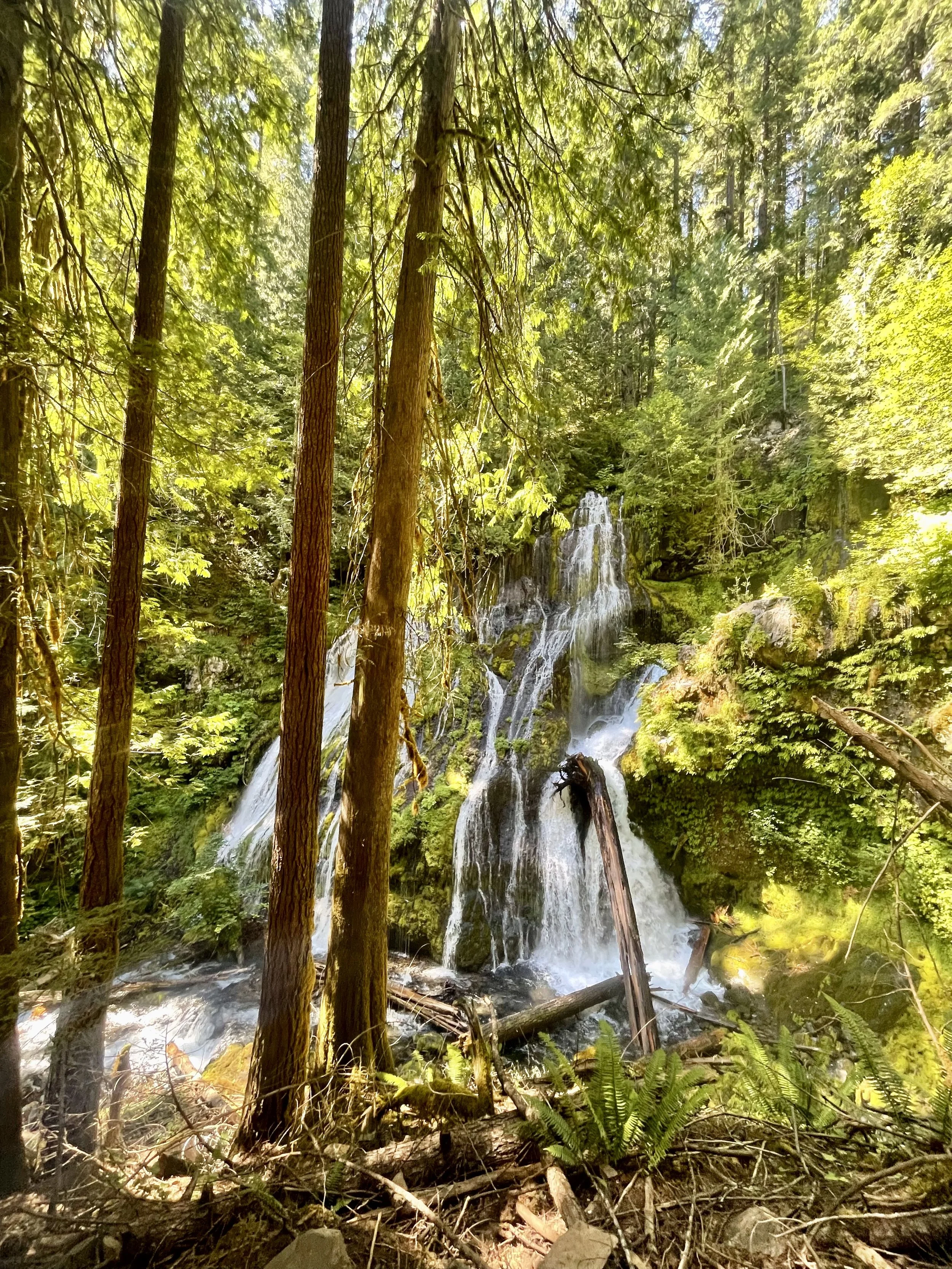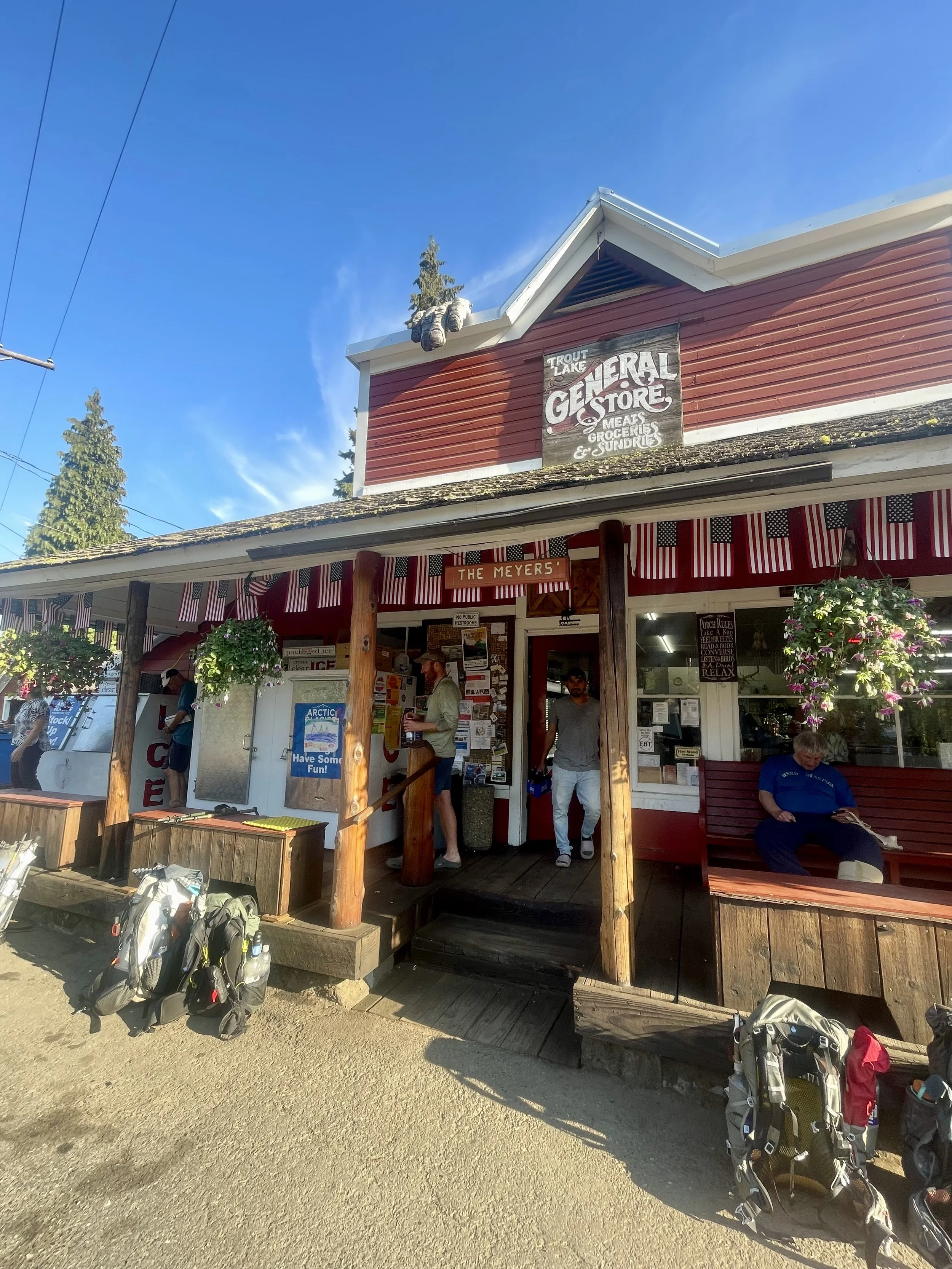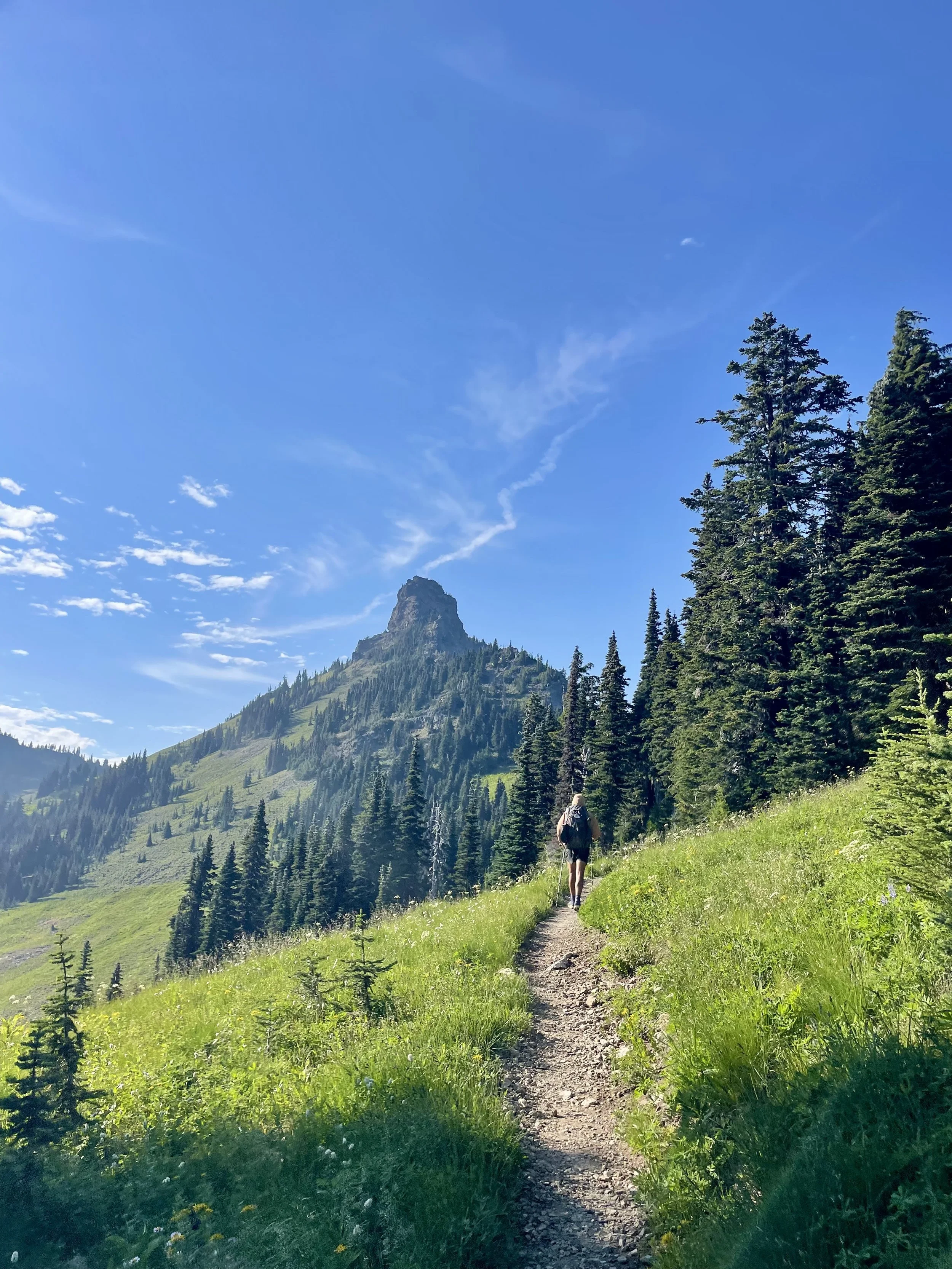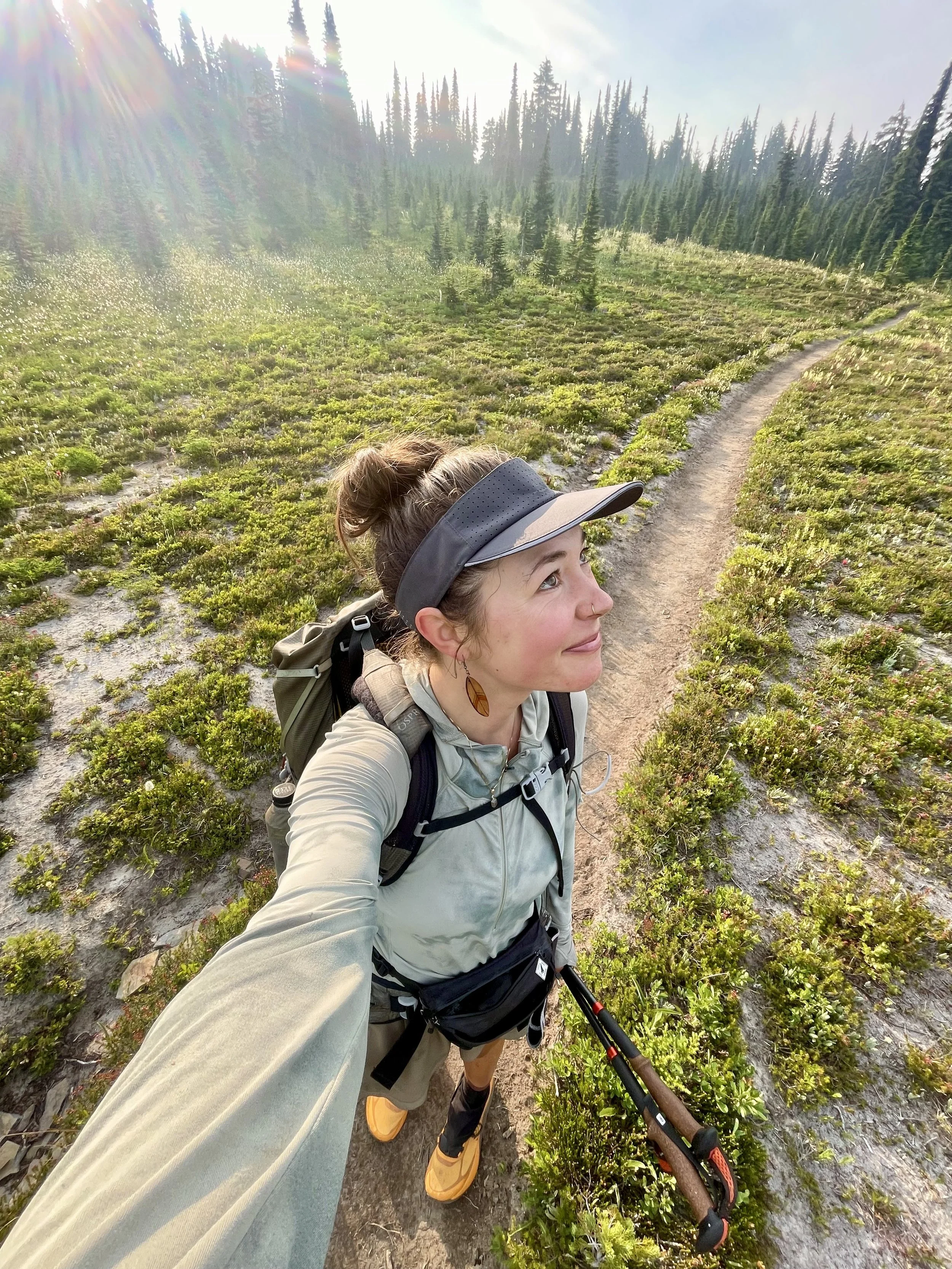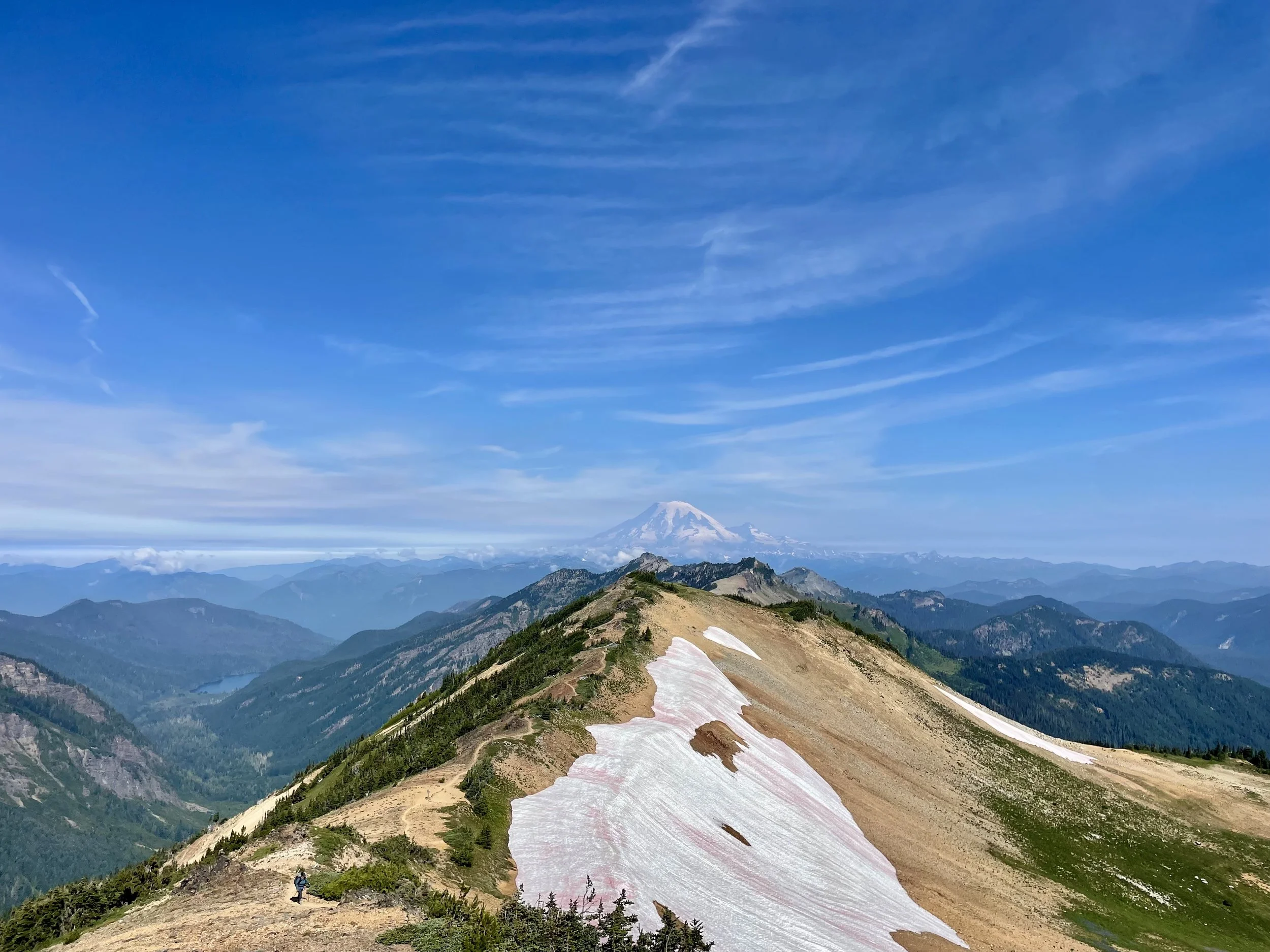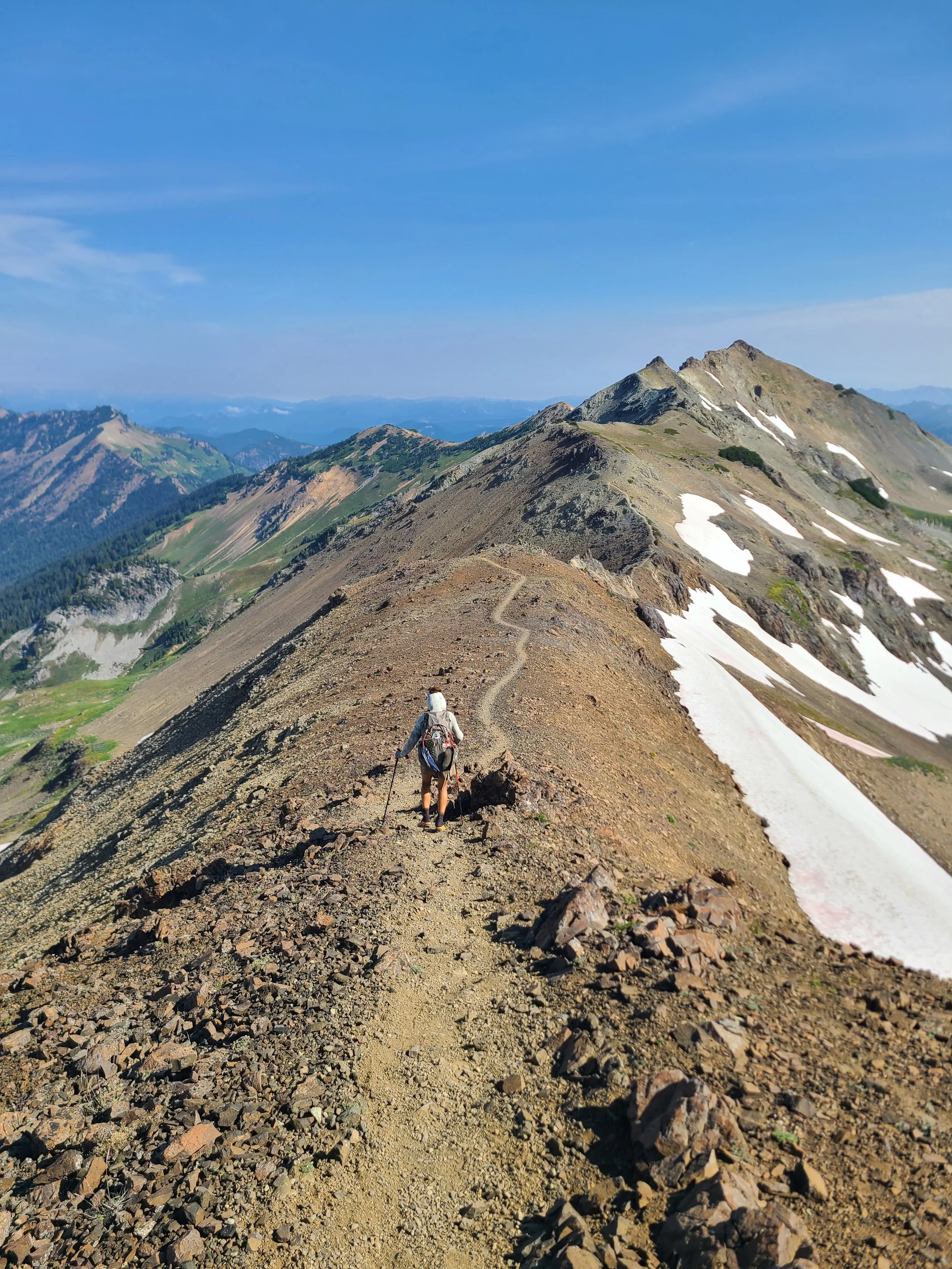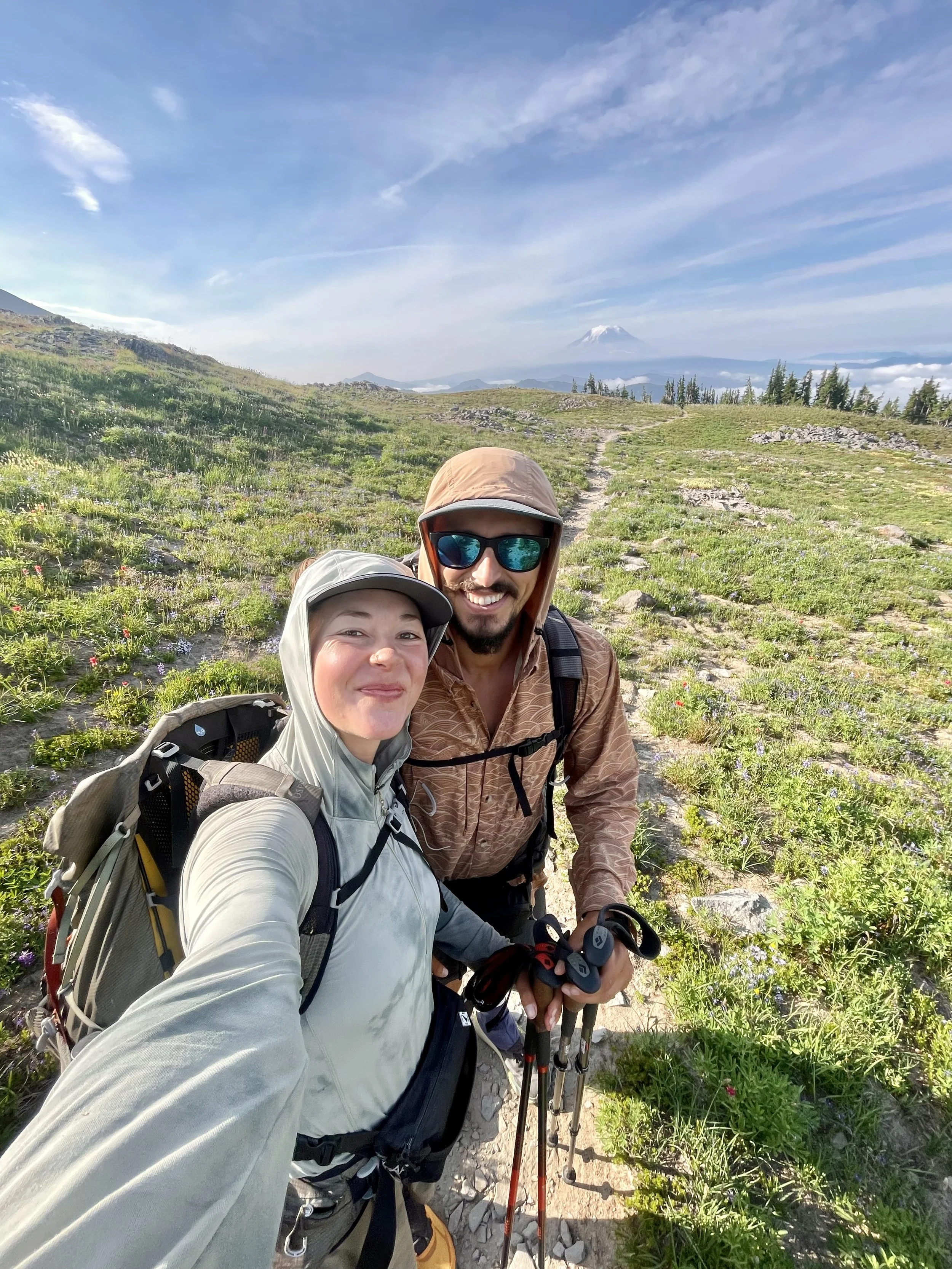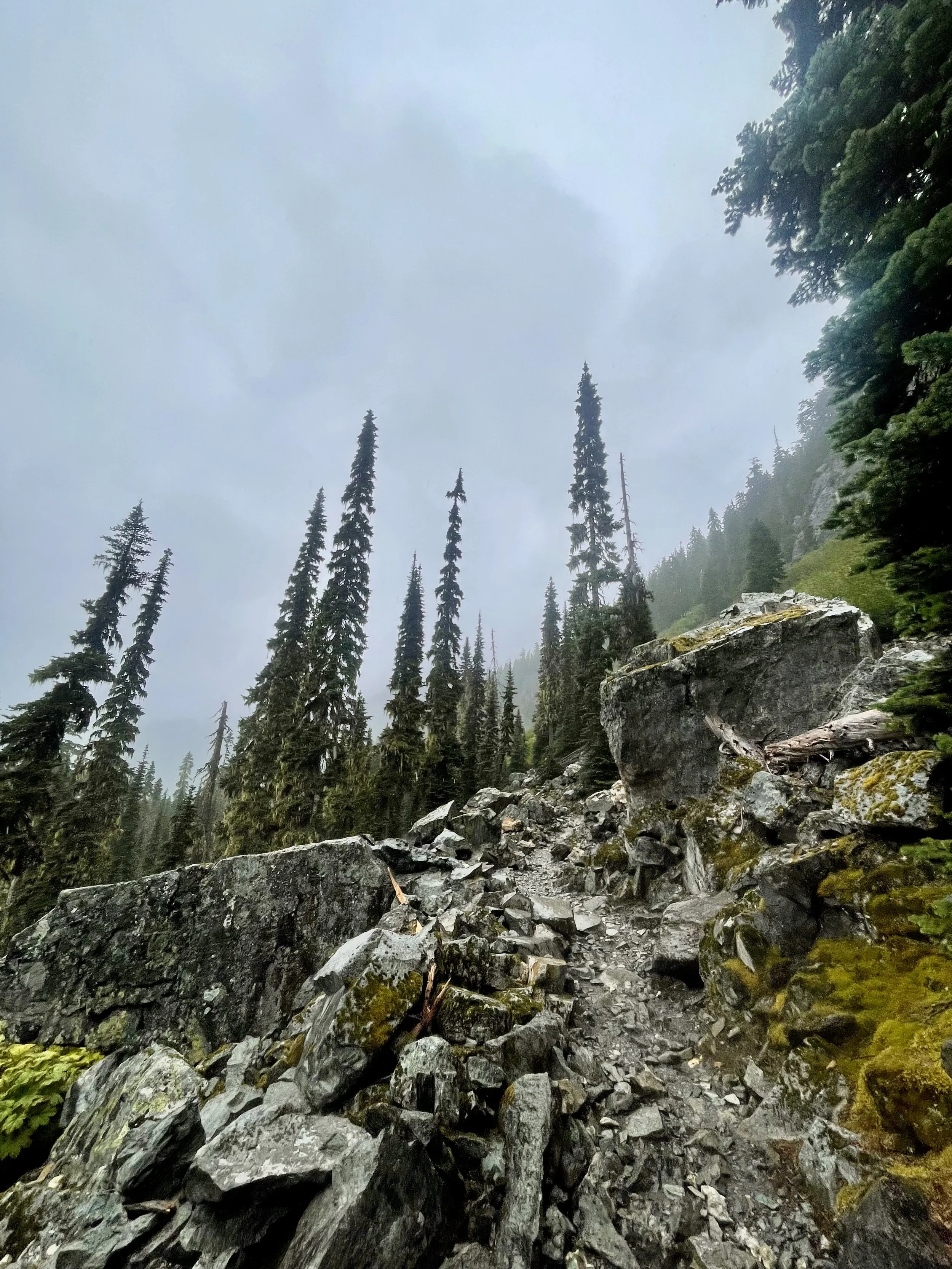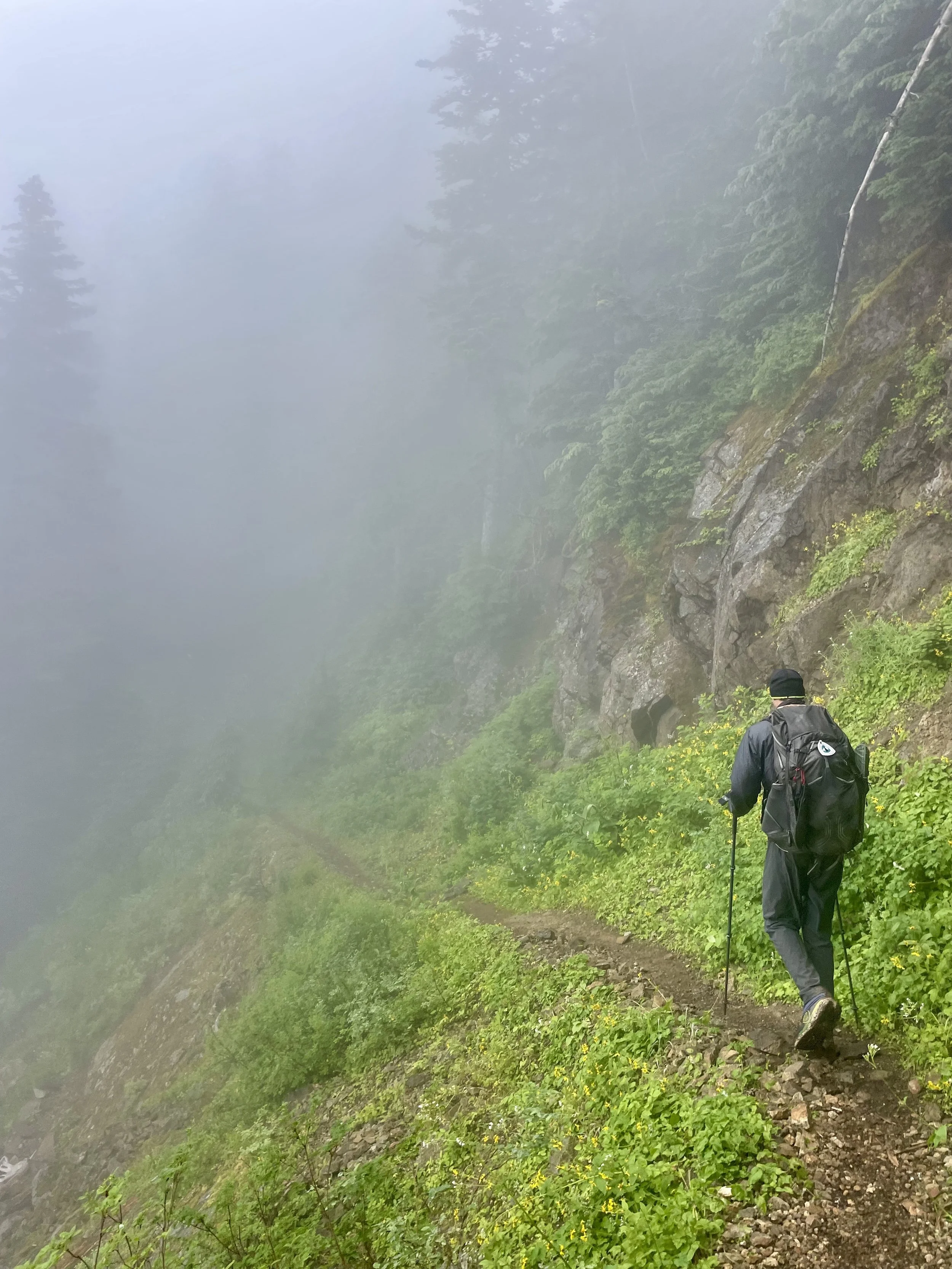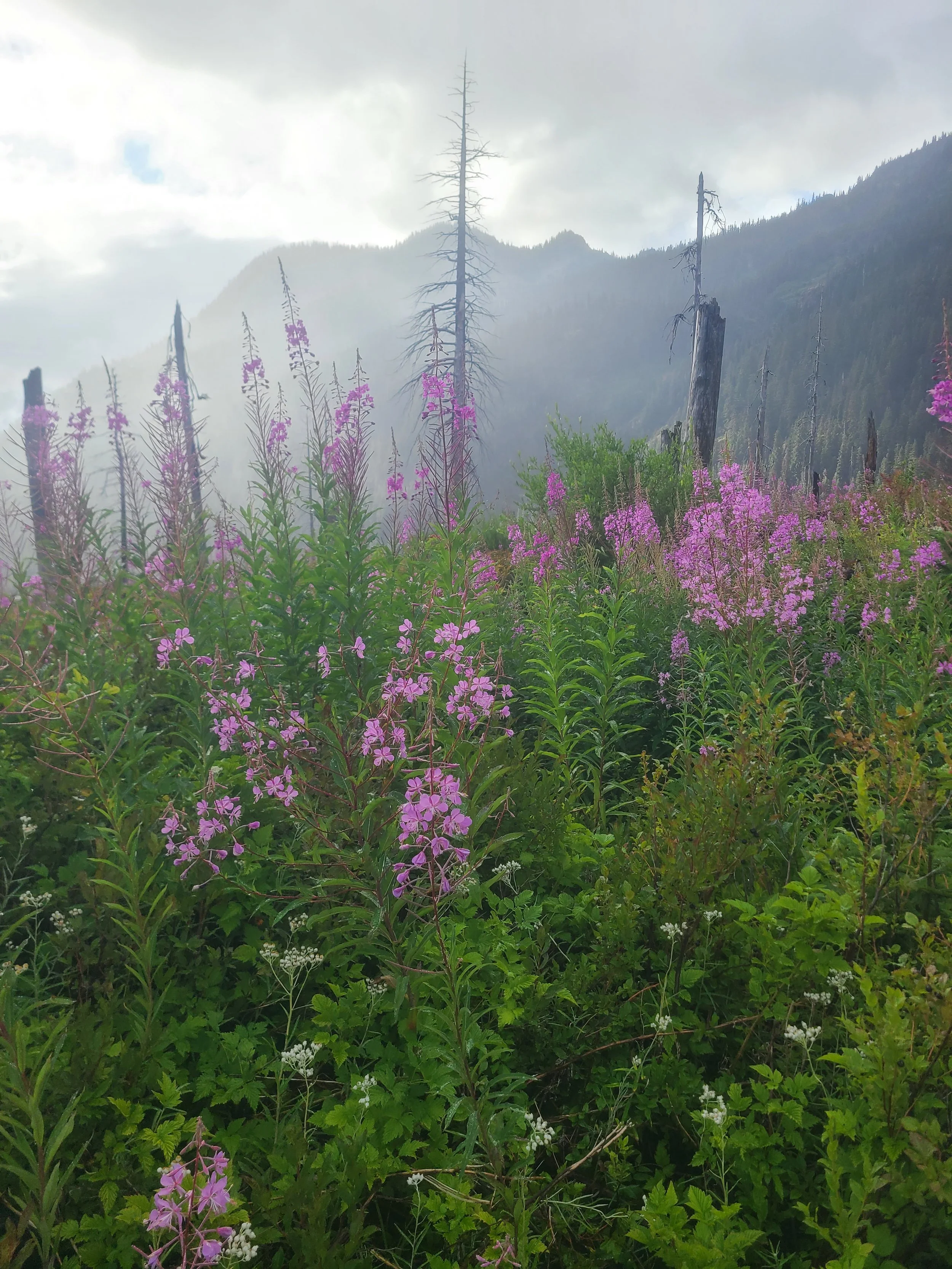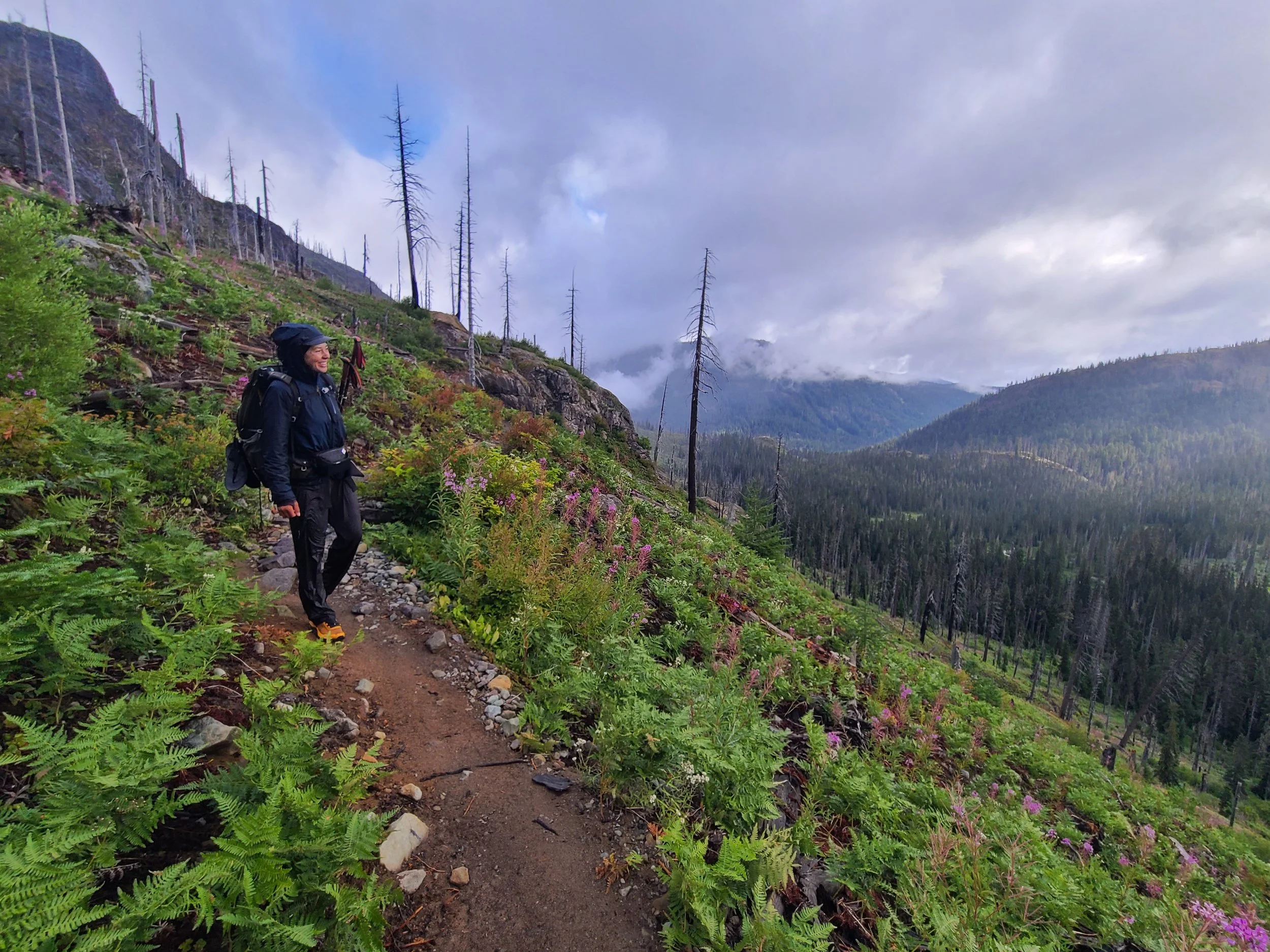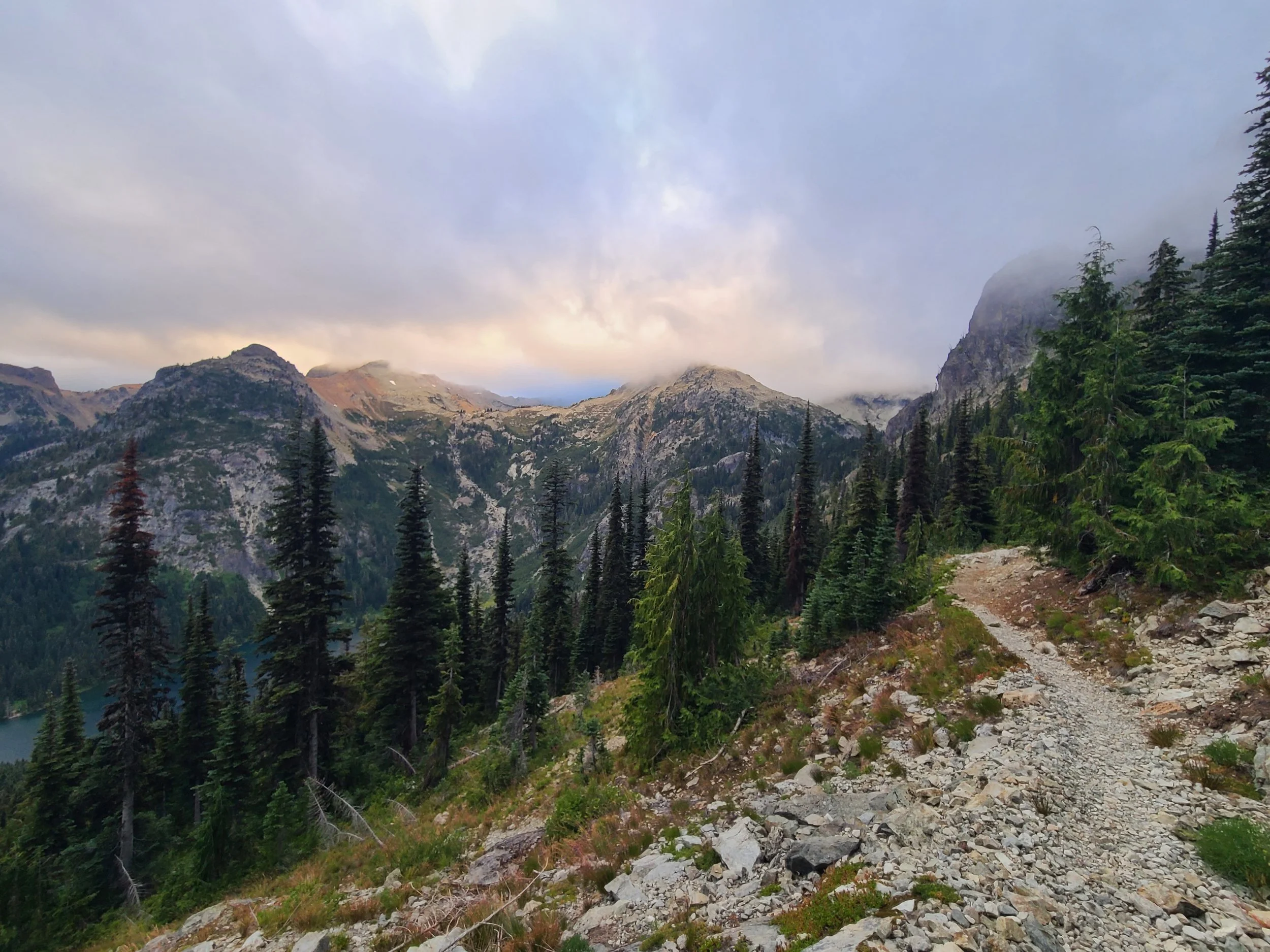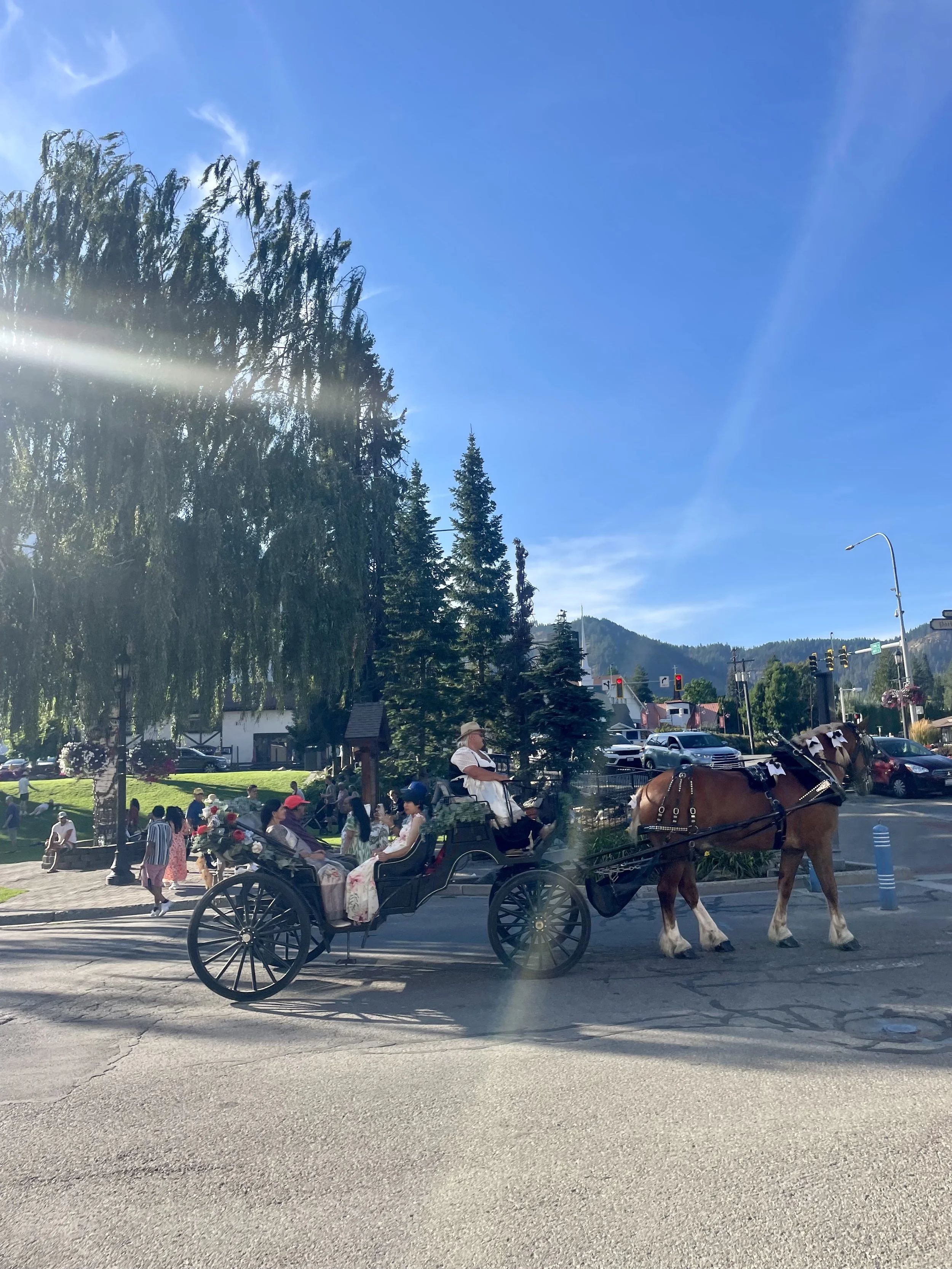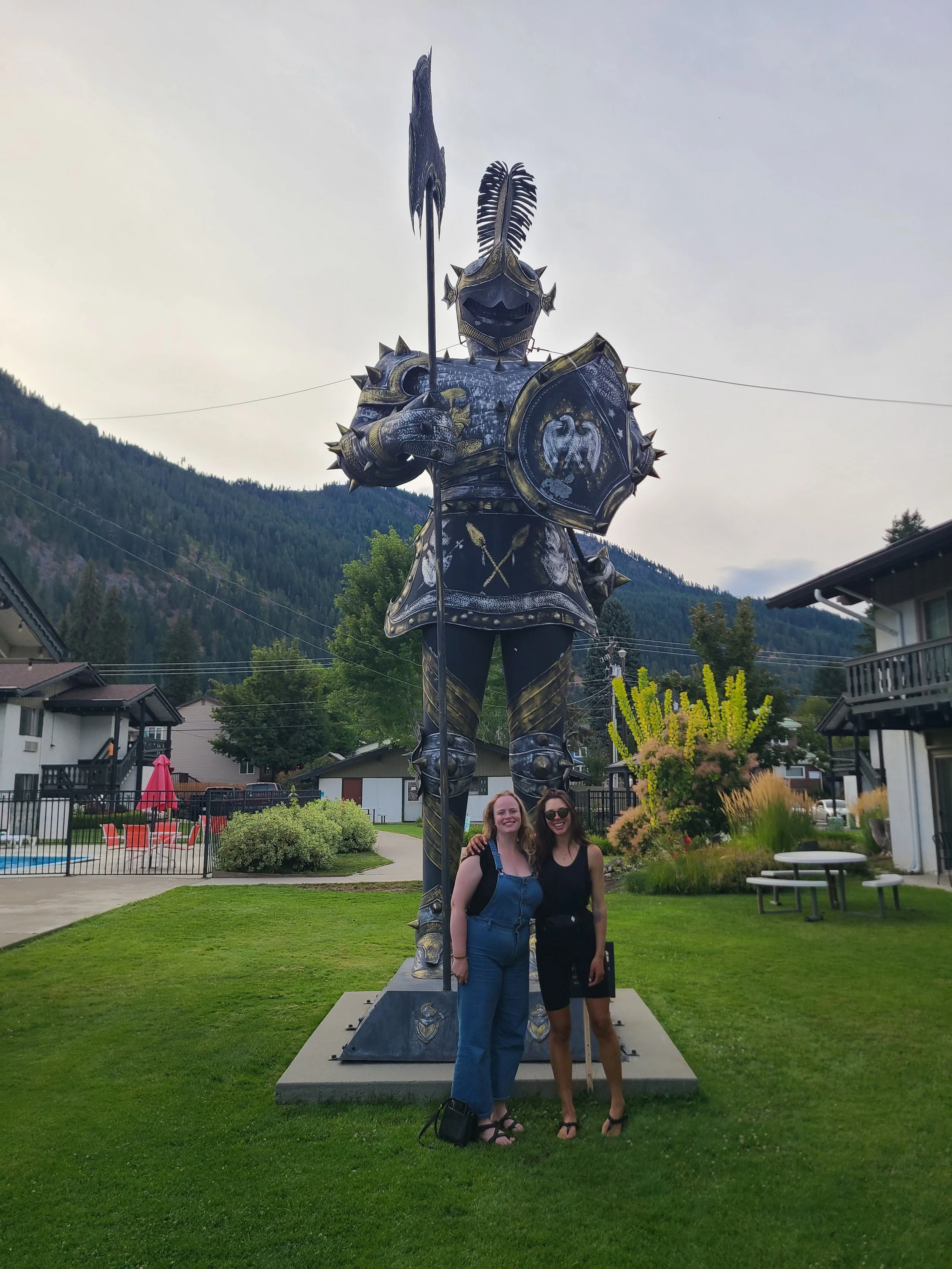Crossing the Threshold: Oregon to Washington on the PCT
July 26th- August 8th | Cascade Locks to Stevens Pass
An emotional return home
The closer we get to the end, the more time feels slippery. We’ve spent months measuring life in footsteps and sunrises, yet now that the finish line is so near, I want nothing more than to slow down.
Over the last two weeks, we charged across Oregon—pushing big miles to “bank” time before our final challenge: Washington. The state every hiker whispers about, where climbs grow steep and descents sharp. After descending into Cascade Locks, we spent a night in Hood River with dear friends who filled us up with ramen, ice cream, and soul-level kindness before sending us back on trail with full hearts and heavier bellies.
Crossing the Bridge of the Gods hit harder than I expected—like walking through a doorway into an old version of myself. Tears welled as I stepped onto my old home soil. Suddenly, the end felt real. This was the place I grew up—the land that shaped my love for wild things. These mountains, fierce and lush, called to me like family. The air smelled like moss and memory.
It all felt symbolic: walking back into the state where my life began, to close a chapter that has transformed it entirely. The finish line we had been rushing towards was now so close—and I wasn’t ready to say goodbye.
The Climb from Cascade Locks: Into the Green Cathedral
The climb out of Cascade Locks was steep– it’s the lowest point on the PCT, which means there’s nowhere to go but up. We wound our way through dense forest, the air thick with bugs, moss sprawling over every branch, and ferns framing the ever so abundant springs. The views were rare but the forest hummed with life.
We were tired but happy. Until the bees came.
The Bees from Hell (and a Humbling Dose of Benadryl)
On day three, I stepped near a nest and felt a sharp sting on my ankle. A bee.
And not just any bee—my childhood nemesis. I’m allergic, and I hadn’t been stung since I was little. That last encounter ended with an EpiPen, a week in bed, and swelling from foot to knee.
Now I was miles from help, with no EpiPen, and my brain immediately started doing the math on how long it would take to reach a road while possibly going into anaphylaxis.
Adrenaline and Panic
I tried to stay calm, but adrenaline took the wheel. Doc told me to strip off my layers in case more bees were hiding, and as I did—another sting on my hand. “Ouch!” I spun, and did a full-body shake like a deranged interpretive dancer. Finally, clear.
My skin burned with a deep throb, swelling fast. Doc handed me Benadryl and Zyrtec, and we called it an early night. I woke throughout the night taking more doses, waiting for the swelling to peak. By morning, it was improving. Maybe, just maybe, I wasn’t as allergic anymore.
Round 2: Revenge of the bees
The next day proved me wrong.
A few miles in, Doc yelped—stung–and seconds later, I felt the familiar fire. Right on my finger.
“You’ve got to be kidding me!” I shouted.
Doc, not being allergic, was okay, but my hand ballooned. My ankle from the previous sting was now so swollen that my sock was cutting off my circulation, and a fever was setting in. I delayed more Benadryl as long as I could, knowing it would make me drowsy, but eventually gave in. I hiked with my hand above my head, but desperately needed ice and the ability to elevate my ankle. Between the swelling, the fever and the Benadryl, it felt like hiking through quicksand.
Trail town salvation: trout lake
By the time we reached the road to Trout Lake, I was utterly done. We managed to hitch into town, but every hotel was booked, so we pitched our tent in the park. Exhausted, itchy, throbbing, and craving ice like a madwoman, I hobbled my way to one of the two restaurants in town and asked for a cup of ice– sweet, numbing bliss. At the general store, we picked up some more meds and a popsicle for my ankle to take back to our tent. Between the round the clock meds, extra nourishment from town food, and a little extra sleep that night, I started to heal. Against all odds, we were still on track for the border.
Trout Lake to Goat Rocks: The Edge of the World
Every southbound hiker grinned and said the same thing:
“You’re in for a treat ahead!”
They weren’t wrong.
From Trout Lake, the trail climbed steadily through rainforest to subalpine meadows, and then—finally—to true alpine. Wildflowers burst across the slopes. Cold creeks tumbled from unseen glaciers. Every bend in the trail revealed a new wonder.
And then came the Knife’s Edge.
A narrow, wind-whipped ridge with thousand-foot drops on both sides, the world stretching wide in every direction. Mount Adams (Pahato) loomed behind us. Mount Rainier (Tahoma) rose ahead– two massive volcanic peaks, commanding all attention.
We moved slowly, reverently. My heart pounded, but not from fear—from awe. This was one of those rare moments where everything aligned: perfect weather, perfect clarity, perfect reminder of why we walk.
To stand here, small and infinite, all at once.
White Pass: Gas Station Glory and Trail Math
By the time we reached White Pass—a gas station on the side of the highway that passes for a resupply hub—we were enamored and starving. We tore open our mailed food box, inhaled some gas-station snacks that were “mildly fresh” at best–it’s amazing what qualifies as cuisine when you’ve burned 5,000 calories a day for months. Then, it was time to hit the trail again. Washington didn’t leave much room for lounging.
Since the terrain was very remote, it meant every resupply needed to be shipped in advance, and every resupply had to be timed precisely—we couldn’t land in town on weekends when post offices were closed, and there were no rest days left to buffer mistakes. This was the final stretch, and it demanded precision.
Mt Rainier: Beauty That Demands Grit
Two years ago, we spent nine days circumnavigating Mount Rainier (Tahoma) on the Wonderland Trail—a bucket list trip that left us awestruck. But nothing compared to seeing her now, from the PCT, on a crystal-clear week when every ridge line felt like the top of the world.
We’d dropped mileage to around 25 miles a day, but the climbs were brutal. Elevation gain stacked high, and fatigue set in deep. The days stretched longer, heavier. The book we listened to during this section was Grit by Angela Duckworth, and it became our mantra. She spoke about perseverance—about treating life as a marathon, not a sprint—and her words hit different when your legs already feel like concrete.
Snoqualmie Chaos: the Resupply Mistake
Just before Snoqualmie, we realized we’d made our first resupply mistake of the entire trail: we mailed our box to the town post office, not the ski lift lodge right on trail. Oof.
That meant a 30-minute hitch into town—and a race against closing hours. We hiked hard, found an alternate road, and by pure serendipity, it passed right by the spot where we’d taken our engagement photos two years ago, back when this whole thru-hike dream was just that—a dream.
It was surreal to stand there again, dirty and tired and somehow more ourselves than ever. We had literally walked our way back into that memory.
We walked here– from Mexico.
At the trailhead, a kind grandfather who’d just finished biking with his daughter and grandkids offered us a ride to the post office. Later that evening, my dear college friend drove from Seattle to share a meal and bring us back to trail. The kindness of people continues to knock the wind out of me. When you have nothing but the feet beneath you and the backpack you carry, you’re at the mercy of a lot, and this was a day that could have been a disaster, and was instead made entirely possible by the generosity of others.
Snoqualmie to Stevens: The Storm That Tested Us
We camped at the base of Snoqualmie Pass and woke to rain—cold, steady, relentless. The forecast said it would clear by late morning (lies). We ducked into the pancake house across from the ski lift, stalling with hot coffee and carbs, but eventually had to face it.
The climb out was steep enough to keep us warm, so we ditched our raincoats. That worked… until it didn’t. The rain turned icy, temperatures dropped, and my hands went numb. I swapped my wet shirt for a fleece, topped it with a raincoat, and kept moving, but our ultralight rain gear met its match in a true PNW storm—proof that ‘waterproof’ is just optimistic marketing. The trail had a way of stripping away illusion—gear, comfort, control—all of it.
We reached the exposed ridge—wind ripping sideways rain across our faces—and there was nothing to do but keep walking. Stopping wasn’t an option. We had to make miles or risk running out of food and not making it to the post office at our next resupply before it closed.
Five miles shy of our goal, we were getting to an unsafe level of cold, so we found a small protected cove and set up camp in the pouring rain. My gloves were water logged sponges. Everything was soaked. Even our double wide quilt had gotten wet in its “waterproof” stuff-sack. We boiled bone broth and crawled under our damp quilt, sipping warmth back into our fingers. We were just happy to be inside the tent listening to the rain, rather than in it.
How Little it takes to feel alive
By morning, it was still raining.
Perhaps this was the trail's way of continuing to test us– another lesson we could add to the toolbelt. We packed up our soggy tent and gear—ten pounds heavier from water weight—put on our wet clothes, and trudged on. My ear throbbed painfully; an infection had been brewing. It hurt to sleep and turn my head. But when the clouds finally broke and the sun poured through, everything changed.
We stopped, spread our gear out across the bushes and rocks, and watched it all dry within half an hour. Socks, quilt, tent—bone dry– the beauty of ultralight gear. Warm sunshine and dry gear could’ve rivaled winning the lottery. It’s wild how little it takes to feel rich out here.
And then there were the huckleberries.
Discovering Alpine Wealth
Sweet, tart, magenta gems bursting across the mountainsides—growing wild and free, sold for $95 a pound down in town but abundant up here. The alpine’s kind of wealth. We ate them by the handful, stained our fingers purple, and laughed when we gave ourselves mild tummy aches from sheer gluttony. Worth it. Every bite.
There’s a common saying among hikers: “the trail provides”, and it’s so true. Here was nature's abundance, in such contrast to the hardships earlier in this section.
The trail really does provide.
Those berries fueled a 30-mile day with 7,000 feet of elevation gain—and somehow, the pain and the cold and even my earache felt lighter.
Leavenworth: Civilization and Bratwursts
When we finally reached Stevens Pass, we were wrecked—but glowing. My childhood friend Chelsea came and swept us off trail, whisking us to Leavenworth, the Bavarian-themed wonderland of bratwursts and pretzels and joy. It was a place I had been dreaming of for weeks.
We showered (first time in twelve days—I’ll let that sink in), devoured everything in sight, picked up our resupply box (in time), some meds for my ear infection(shout out to my doctor from home), and collapsed into soft hotel sheets–it was the sweetest trail magic.
The Final Stretch
After a night of rest, it was back to trail. One more chapter, one more resupply, one more wild stretch before the story ends. Less than 200 miles remained between us and the border, and my belly ached at the thought of saying goodbye. The forest still smelled like the beginning, even as we neared the end.
I could already feel the ending rising like a mountain we couldn’t yet see — heavy, inevitable, and breathtaking. We’d walked ourselves into people I barely recognized, and I wasn’t sure how to carry her—the wild, stripped-down version of me—back into the world that waited beyond the trees.





